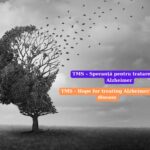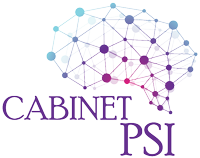
Understanding Neurodiversity: Embracing Unique Minds
27 November 2024
Non-Invasive Brain Stimulation: A Promising Future for Treating Cognitive Decline in Alzheimer’s Disease
13 January 2025In the modern world, caffeine and alcohol are two of the most consumed psychopharmacological substances, but their interaction remains an intensely researched topic. Recent studies bring an innovative perspective: caffeine could play a protective role against the effects of alcohol on the mesolimbic dopaminergic system, a neural circuit essential for reward and addiction.
The Impact of Alcohol and Caffeine on the Mesolimbic System
The mesolimbic dopaminergic system, involved in motivation and reinforcement behaviors, is a key target of substances such as alcohol. Alcohol stimulates the release of dopamine (DA) in the nucleus accumbens (AcbSh) and activates dopaminergic neurons in the posterior ventral tegmental area (pVTA). These effects contribute to its addictive properties.
In contrast, caffeine, through adenosine A2A receptor antagonism (A2AR), can inhibit these processes. Research shows that taking caffeine significantly reduces alcohol-induced dopaminergic activation, thus providing a mechanism by which caffeine can decrease the risk of addiction.
Caffeine’s Mechanisms of Action
Caffeine interferes with the effects of alcohol through several mechanisms:
- A2A receptor blockade: This process prevents the activation of DA neurons in the pVTA and increases the release of dopamine in the AcbSh.
- Inhibition of the effects of the metabolite salsolinol: Caffeine prevents the formation of salsolinol, a metabolite of alcohol associated with its strengthening effects.
- Metabolic changes: Caffeine prevents alcohol-induced changes on energy metabolism and lipid signaling in pVTA.
Metabolomic analyses suggest that caffeine protects against biochemical imbalances generated by alcohol, affecting compounds such as adenosine and carnitines.
Therapeutic implications
The findings bring hope for the development of innovative treatments in alcohol use disorder (AUD). Caffeine and A2AR antagonists, such as SCH 58261, can be used to prevent or manage the effects of alcohol on dopaminergic circuits. These substances could become key components of integrated therapeutic strategies that address not only the symptoms of addiction, but also its neurochemical mechanisms.
Conclusions
The study highlights an unexplored potential of caffeine in the field of addiction, suggesting that it is not only a daily energy booster, but also a possible ally in the fight against excessive alcohol consumption. Further research is essential to confirm the applicability of these findings in humans and to explore the clinical use of caffeine in alcohol use disorders.
These new insights into the interaction between caffeine and alcohol underscore the complexity of the neurochemical mechanisms involved in addiction and pave the way for more effective therapeutic approaches.


